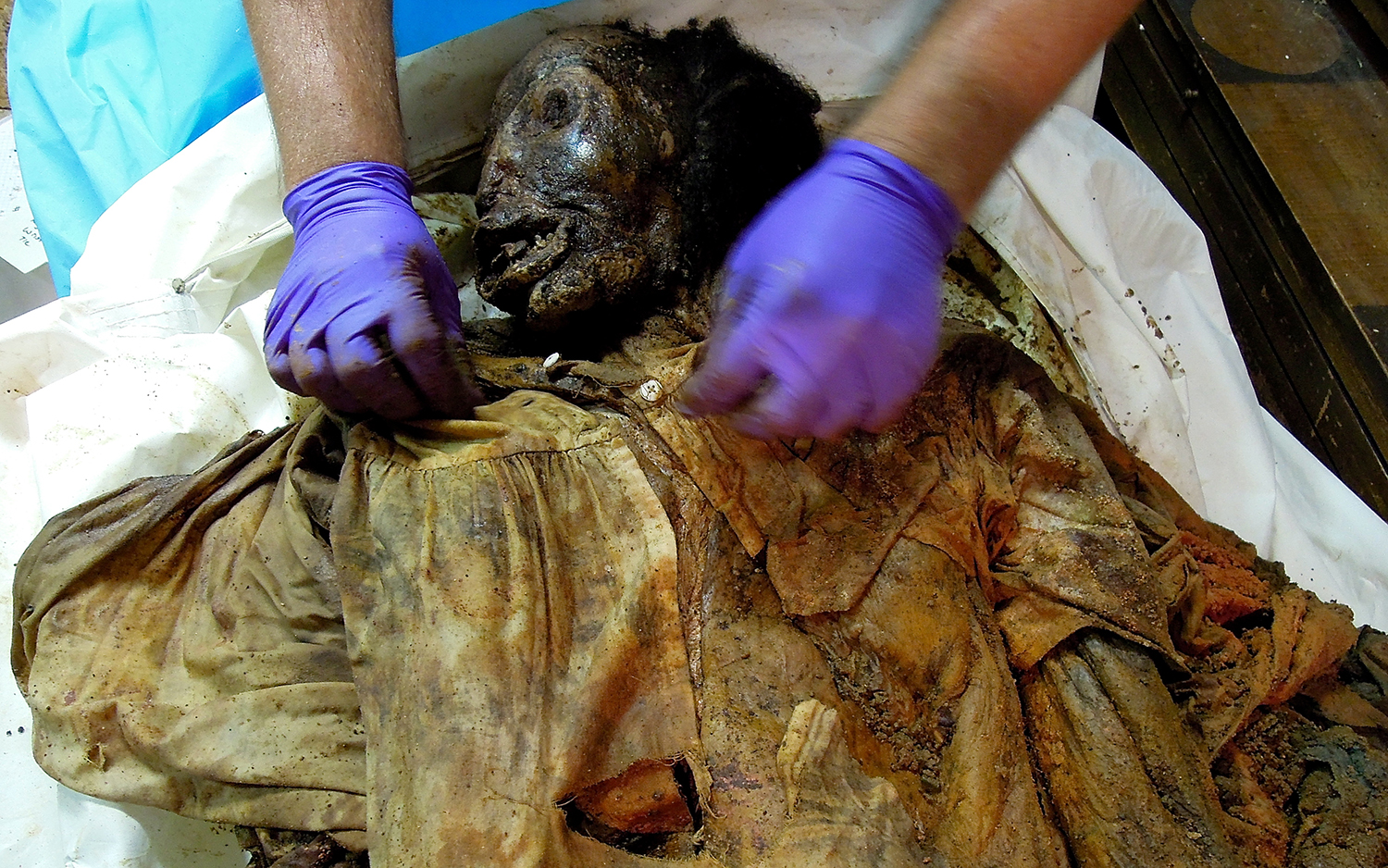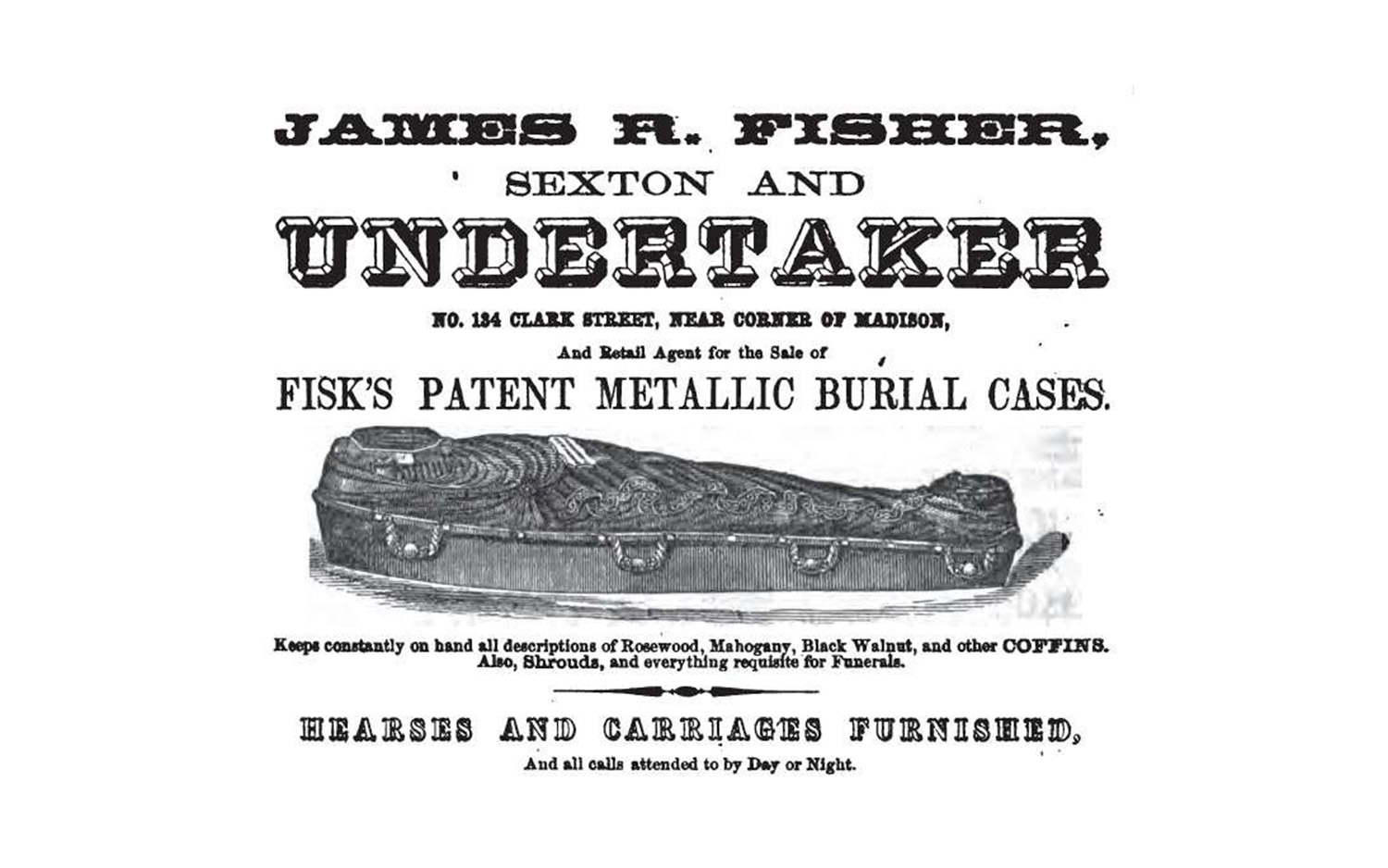Airtight Iron Coffin Found in Queens Held a Mysterious 19th-Century Mummy

When construction workers unexpectedly unearthed the mummified body of a young African-American woman in the New York City borough of Queens in 2011, police thought the corpse belonged to a victim of a recent homicide. But closer examination soon revealed that her story was much stranger — and much older — than first suspected.
Broken metal fragments scattered near the construction equipment were later identified as pieces of an ornate and expensive form-fitting iron coffin; its sealed environment had preserved the woman's remains in remarkable detail, which is why officials initially mistook her for recently deceased.
Iron coffins were only produced for a brief period during the middle of the 19th century, so the casket — along with the style of the woman's burial clothing — helped experts to date her body to the mid-1800s. But who was she, and how did she come to be buried in such an unusual container? The mystery woman's peculiar tale comes to light in a new documentary, "The Woman in the Iron Coffin," airing on PBS tonight (Oct. 3) at 10 p.m. local time. [Photos: The Amazing Mummies of Peru and Egypt]
Scott Warnasch, then a forensic archaeologist with the New York City Office of Chief Medical Examiner, was called to the location with a team to document and recover the partly buried remains. And he immediately recognized the iron bits as coffin fragments, because he'd come across similar iron coffins years earlier during an excavation in New Jersey, he told Live Science.
"I've been obsessed with these iron coffins since 2005, when two were found under the Prudential Center in Newark," Warnasch said. "I told the crew, 'This is historical, this isn't a crime scene.'"
After a backhoe broke open the coffin, it dragged the body and dumped it under a load of dirt. As Warnasch and others brushed the dirt away, they noted that the body belonged to an African-American female dressed in a garment that looked like a 19th-century nightgown, along with a knit cap and thick knee socks.
Something else about the remains caught the investigators' attention. Her skin was so well preserved that they could spot what looked like lesions from smallpox on her forehead and chest. Work on the corpse was temporarily suspended, until representatives of the Centers for Disease Control and Prevention (CDC) confirmed that the virus was no longer active, Warnasch said. [Photos: The Reconstruction of Teen Who Lived 9,000 Years Ago]
Get the world’s most fascinating discoveries delivered straight to your inbox.
Building a profile
Magnetic resonance imaging (MRI) and computed X-ray tomography (CT) scans allowed the scientists to examine the body noninvasively and create a biological profile of the woman: They determined she was 5 feet, 2 inches tall (1.6 meters), African-American and about 25 to 30 years old, Warnasch explained.
The site where she was discovered was formerly an African-American church and cemetery; the church was founded in 1828 by the region's first generation of free black people, but there are newspaper accounts of an African-American cemetery on that land dating to a decade earlier, according to Warnasch.
A deep dive into local census records from 1850 provided the investigators with the final missing puzzle pieces about the woman's identity. They discovered that the remains likely belonged to Martha Peterson, a resident of New York City and the daughter of John and Jane Peterson. She died when she was 26 years old, and she was meticulously prepared for burial by caring hands — something that revealed a glimpse of the close-knit, emancipated African-American community to which she belonged, Warnasch said.
"Despite the fact that she was contagious with smallpox, they still cleaned her body, dressed it, did her hair — even though this was a potentially life-threatening disease," he said.
Sealed in iron
Iron coffins were manufactured for less than a decade, but during the brief time when they were available, they made quite an impression. A stove maker named Almond Dunbar Fisk designed and patented them in 1848, and they were molded to be formfitting and airtight, locking out air and preventing decay. This made them ideal for transporting bodies over long distances by train, and the coffins quickly gained popularity with political elites in Washington, D.C., Warnasch said.
"In 1849, Dolley Madison — the former first lady — used one of these for her funeral, and that put Fisk on the map," he said.
So, how did a young African-American woman from New York City end up in one of Fisk's famous coffins? Another advantage of the airtight caskets was their ability to quarantine a body that might be riddled with a contagious disease, Warnasch explained. If someone died of an infectious disease — such as smallpox — an iron coffin would allow the remains to be safely displayed and buried, he said.
Forensic specialists initially thought that Peterson might have been buried in the iron coffin because her loved ones feared the spread of disease. However, further analysis led the investigators toward a different explanation, Warnasch said, adding, "but I don't want to give too much away."
Regardless of why she was placed in an iron coffin, its airtight properties certainly stood the test of time, Warnasch said.
"She looked like she had been dead for a week, but it was 160 years," he said.
Perhaps in the end, what is most fascinating about this woman is how ordinary she was, Warnasch told Live Science. She wasn't well-known, wealthy or privileged, and because she was just "a regular person," the details of her burial can therefore tell us a great deal about the daily lives — and deaths — of African-Americans in New York at that moment in history, he said.
"The Woman in the Iron Coffin" is available to stream on the PBS website and app beginning Oct. 4.
Original article on Live Science.

Mindy Weisberger is a science journalist and author of "Rise of the Zombie Bugs: The Surprising Science of Parasitic Mind-Control" (Hopkins Press). She formerly edited for Scholastic and was a channel editor and senior writer for Live Science. She has reported on general science, covering climate change, paleontology, biology and space. Mindy studied film at Columbia University; prior to LS, she produced, wrote and directed media for the American Museum of Natural History in NYC. Her videos about dinosaurs, astrophysics, biodiversity and evolution appear in museums and science centers worldwide, earning awards such as the CINE Golden Eagle and the Communicator Award of Excellence. Her writing has also appeared in Scientific American, The Washington Post, How It Works Magazine and CNN.




